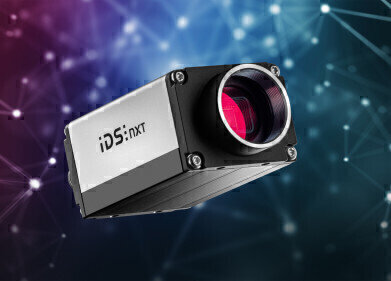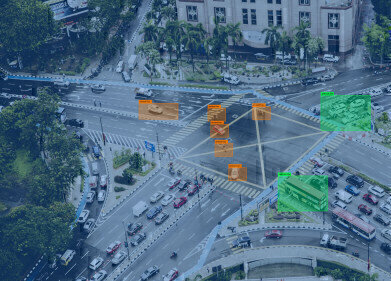Environmental Laboratory
How image data and AI pave the way to smart cities
May 11 2021
The Internet of Things (IoT) is transforming the way we live and move. Its impact could not be greater – IoT is enabling new applications such as intelligent traffic management, parking management and waste disposal, ensuring more efficient use of resources such as water and clean air, and thus making an essential contribution to the well-being of the population. But how can mobility and urban planning be designed to be smart and sustainable? And what role does camera technology play in this?
A key technology is artificial intelligence. Organic products with different shapes and colors are difficult to describe in the corset of standardized algorithms with which industrial cameras usually work. Anyone who wants to realise applications in which objects with a wide variety of characteristics – such as vegetables or fruit – are to be reliably recognised, cannot afford to ignore image processing with artificial intelligence. Intelligent vision systems for collecting and analysing information are also a valuable tool when it comes to detecting conditions, making decisions and triggering follow-up processes. To make best us of this technology, AI vision systems that are equally flexible, easy to handle and powerful are required. This is where IDS NXT ocean comes into play.
IDS NXT ocean is a particularly user-friendly end-to-end solution which allows users to create AI-based image processing applications – even with little previous knowledge. The intelligent cameras from IDS can help to detect contaminants of various materials in waste disposal and management, which optimises waste handling and makes it more sustainable. The timely detection of unwanted material can also prevent damage to recycling machines. Vision apps help to flexibly control which task the embedded vision system should solve; from simple barcode reading to complex AI-based object detection. Thanks to their compact industrial-grade housing and interfaces such as OPC UA, the intelligent IDS NXT cameras can be easily integrated into applications. Image processing takes place directly on the camera and can then be transmitted as a result, for example to a machine control system.
Customers are provided with coordinated workflows and all the necessary tools so that they can easily develop application on their own. With the IDS-hosted, cloud-based AI training system IDS NXT lighthouse, they can train a neural network with their own images without any prior deep learning knowledge and without having to install any hardware or software. This is remarkable, because although automation is a defining topic in the agriculture and food sector, only few all-in-one packages for embedded vision with deep learning are available. In many cases, this is still project work, with customers building the systems themselves step by step. IDS Imaging Development Systems removes these hurdles so that even companies without dedicated AI specialists can benefit from the current technical state of the art and keep their competitive edge. For more information and application examples, please click here.
Digital Edition
IET 34.2 March 2024
April 2024
Gas Detection - Biogas batch fermentation system for laboratory use with automatic gas analysis in real time Water/Wastewater - Upcycling sensors for sustainable nature management - Prist...
View all digital editions
Events
Apr 30 2024 Melbourne, Australia
Apr 30 2024 Birmingham, UK
May 03 2024 Seoul, South Korea
May 05 2024 Seville, Spain
May 06 2024 Minneapolis, MN, USA




















